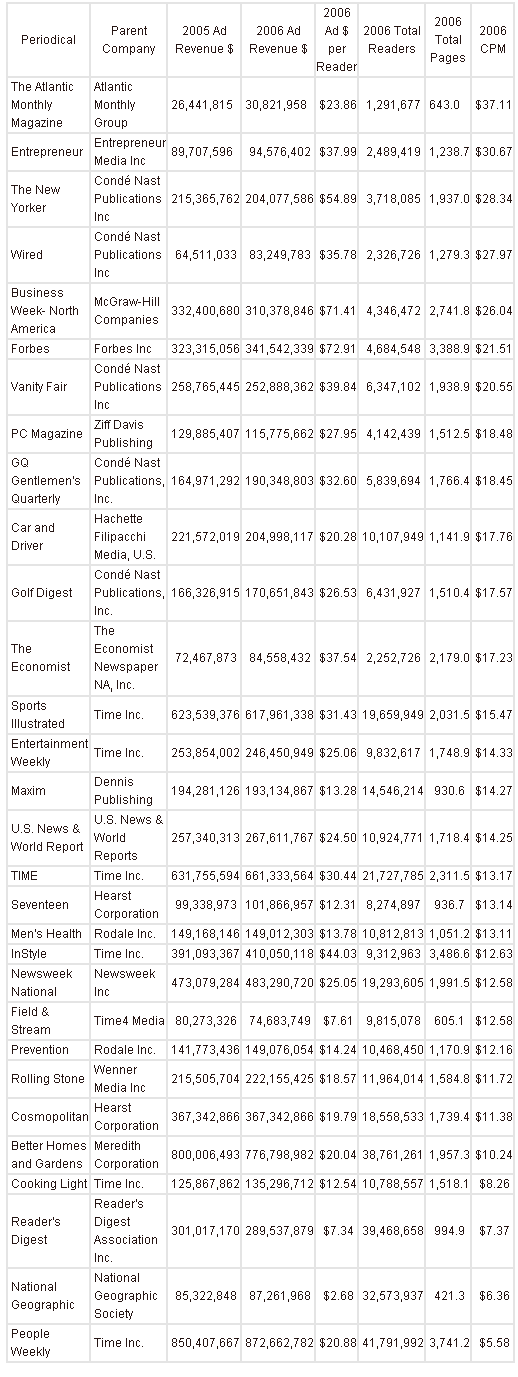题库 / GMATLA-TA-1

The table present gives ad revenue figures for US media publications and their parent company. For each periodical, the table gives 2005 and 2006 ad revenue. For 2006, it offers more detail for each publication, with the metrics shown.
CPM stands for Cost per Mil. It's an industry metric that describes the advertising cost charged to advertisers for every 1000 in impressions reached. Each reader looking at one page of a magazine counts as an impression so CPM = Ad Revenue / (Readership * Pages) / 1000. Magazines charge advertisers at the CPM rate, which varies based on the demographics of a magazine's readership.
Each column of the table can be sorted in ascending order by clicking on the word "Select" above the table and choosing, from the drop-down menu, the heading of the column on which you want the table to be sorted.
Consider each of the following statements about the ad revenue figures. For each statement, indicate whether the statement is true or false, based on the information provided in the table.
| Yes | No | |
|---|---|---|
|
|
|
Conde Nast experienced greater total growth in ad revenue (in dollar terms) than did Time Inc from 2005-06.
|
|
|
|
Ad revenue per reader exceeded cost per impressions in 2006 for more than two-thirds of the 30 publications listed.
|
|
|
|
The largest publication by readership is also the one that brings in more revenue (in $) per dollar charged for advertising impressions in 2006.
|
请问老师,这个题只能一个一个加起来计算吗?有没有简便算法啊
可以只把百万以上的数字加起来,后面数字不看
登录 或 注册 后可以参加讨论